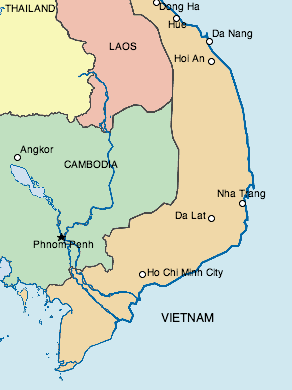Cambodia Today
Thursday, October 24th, 2002
Pol Pot, the architect of one of the most brutal and radical revolutions that had its origins in Beijing China, was never brought to international justice. He died in 1989 from Malaria (or some say a massive heart attack). Some of his cohorts are running free; some are in jail in Phnom Penh.
The guesthouse where I was staying offered motorcycle tours to Pol Pot’s house and grave about four hours from Siem Reap but knowing that there are still a few thousand Khmer Rouge out there and knowing they hate the Americans I decided to stay put. Today Hun Sen of the Cambodian People’s Party, who destroyed all his opposition with political guile and cunning and likes to be called The Strongman of Cambodia, was elected Prime Minister in 1998, amid rioting and demonstrating, but recently seems to be a force for stability. There will be another election in 2003.
The People
Even though the country is very poor, the Cambodian people are surprisingly open, cheerful and friendly…busily going about their business on bicycles and motorcycles…scars lying just beneath the surface by years of conflict and the legacy of an estimated four to six million landmines dotting the countryside awaiting new victims. As many as 40,000 Cambodians have lost limbs due to mines…the highest per capita rate in the world…about one in 250 people. But they are reserved and guarded with foreigners…those human ATM machines.
At the Goldiana Hotel in Phnom Penh, the desk folder contained 7 double sided pages of Non Governmental Organizations with 35 NGO’s listed on each page…all attempting in one way or another to undue the ravages of war…providing over 70% of the income of the country.
It is heartening to see children gleefully playing marbles in the street and friends laughing over a beer in a sidewalk cafe…life bravely continuing on. We still prefer to eat at sidewalk food stalls, many of which are really extensions of the family kitchen that is all moved back inside at the end of the day. We did stop in one restaurant for Bob’s favorite drink, iced coffee and my favorite drink, Lemon Juice, to find that as many as 35 older children from the countryside lived and worked there so of course Bob entertained them all with his camcorder…their giggling and laughing…

